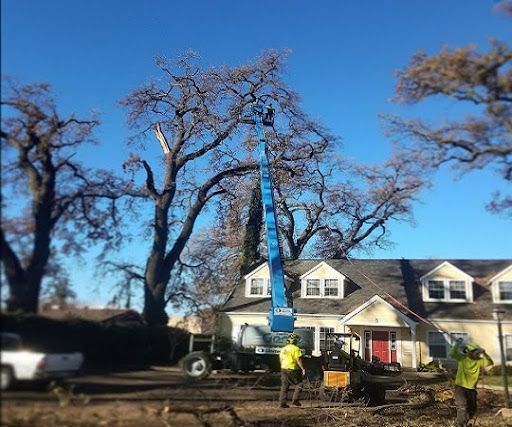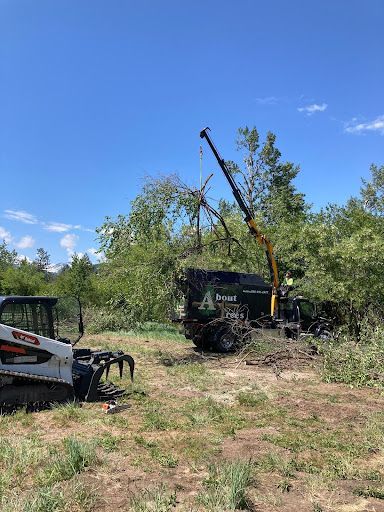Dormant Pruning: What Is It and What Are the Benefits
When it comes to maintaining the health and vitality of your trees and shrubs, dormant pruning emerges as a secret weapon in the arsenal of landscaping enthusiasts. Dormant pruning, a technique often overlooked, involves trimming and shaping trees and shrubs during their winter dormancy. In this blog, we'll delve into the world of dormant pruning, exploring its benefits, the best time for implementation, and additional measures to protect your green companions.
What Is Dormant Pruning?
Dormant pruning is a horticultural practice that involves Tree and Shrub Trimming and Pruning during their dormant season, typically in late fall to early spring. This dormant period is characterized by slowed growth, making it an ideal time to address various issues without causing stress to the plants. The primary goals of dormant pruning include shaping the plant, removing dead or diseased branches, and promoting overall structural integrity.
One of the key advantages of dormant pruning is that it minimizes the impact on the tree or shrub, as it's not actively growing during this period. This allows the plant to allocate energy towards healing and recovery, gearing up for robust spring growth.
Dormant Pruning Benefits
- Disease Prevention: Removing dead or diseased branches during the dormant season helps prevent the spread of pathogens. With reduced fungal activity in winter, the chances of infection are significantly lower.
- Enhanced Structural Integrity: Shaping the plant during dormancy encourages the development of a strong and balanced structure. This is crucial for long-term health, especially during severe weather conditions.
- Stimulated Growth: Strategic pruning during dormancy stimulates new growth in the spring. This is particularly beneficial for fruit-bearing trees, as it promotes the formation of new buds and improves fruit quality.
- Increased Sunlight Penetration: Trimming during the dormant season opens up the canopy, allowing more sunlight to reach the interior branches. This not only promotes healthier growth but also reduces the risk of fungal issues.
- Improved Air Circulation: Thinning out branches during dormant pruning enhances air circulation within the canopy. This helps in preventing the development of conditions conducive to mold and mildew.
When Is the Best Time for Dormant Pruning?
The timing of dormant pruning is critical for its effectiveness. The general rule of thumb is to conduct dormant pruning when the plant is in its winter dormancy, which typically occurs from late fall to early spring. However, it's essential to avoid pruning during periods of extreme cold, as this can cause additional stress to the plant.
For deciduous trees, late winter or early spring is ideal before new growth begins. Evergreen trees can be pruned in late winter when the risk of winter injury is minimal. It's important to note that some flowering trees should be pruned immediately after they bloom to avoid cutting off next season's flower buds.
What Else Can You Do to Protect Your Trees and Shrubs?
In addition to dormant pruning, there are several measures you can take to safeguard the well-being of your trees and shrubs:
- Mulching: Apply a layer of mulch around the base of your trees and shrubs to insulate the soil, retain moisture, and protect against temperature fluctuations.
- Hydration: Though trees are dormant, they still require moisture to stay healthy. Ensure your trees are adequately watered, especially during dry winter spells.
- Wrapping Young Trees: Young or newly planted trees may benefit from protective wrapping to shield them from harsh winter winds and temperature extremes.
- Inspect for Pests: Take the time to inspect your trees and shrubs for signs of pests before winter arrives. Addressing pest issues in advance can prevent further damage during the dormant season.
Conclusion
In conclusion, dormant pruning is a proactive and beneficial practice for maintaining the health and appearance of your trees and shrubs. By addressing structural issues, preventing diseases, and promoting new growth, dormant pruning sets the stage for a flourishing landscape come spring. Additionally, incorporating other protective measures, such as mulching and pest control, further enhances the resilience of your plants.
Contact About Trees Today
For specialized tree services, including expert dormant pruning, contact About Trees. With their commitment to excellence and dedication to customer satisfaction, About Trees has quickly become the trusted name in tree services in Redding and Chico CA. Contact About Trees today. For Redding area service call (530) 246-2477. For the Chico area call (530) 343-4533 or email them at info@abouttrees.us to schedule a consultation or to inquire about their services.



